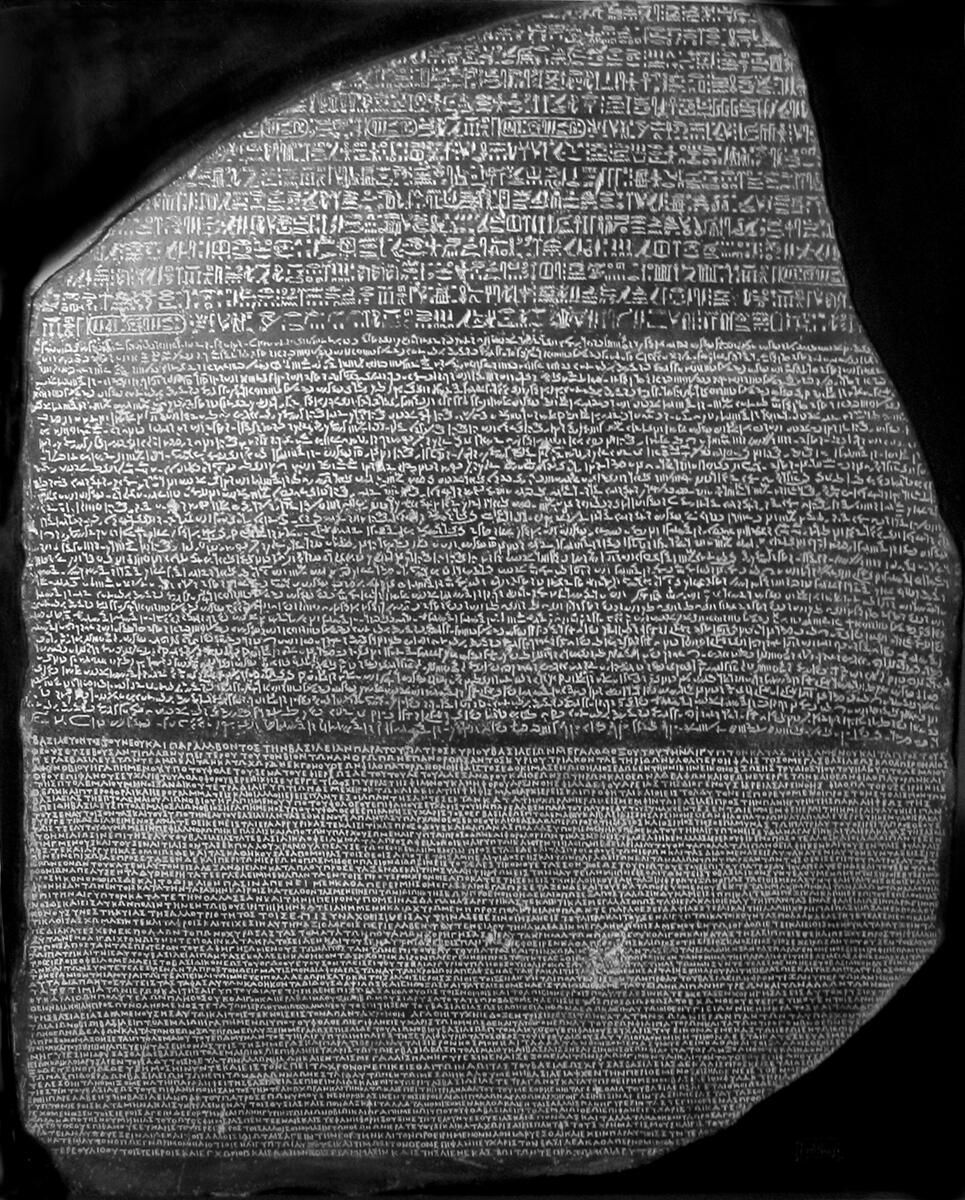Rosetta Stone
Name/Title
Rosetta StoneEntry/Object ID
81H0241Description
Trilingual inscription in three bands: hieroglyphic, demotic, and Greek script.Type of Sculpture
ReliefArtwork Details
Medium
ResinContext
The Rosetta Stone is the surviving part of a great basalt monument or stele bearing an inscription dated to the 9th year (196 BC) of Ptolemy V Epiphanes (210-180 BC). The Ptolemaic rulers of Egypt, of whom Cleopatra was the last (died 30 BC), were of Macedonian origin and spoke Greek. This decree, voted by the priests of Egypt at Memphis, is repeated in two languages--Egyptian (in both hieroglyphic and demotic scripts) and Greek. It records the good deeds of Ptolemy and the honours proposed for the twelve-year-old King. Copies of the decree were to have been erected in many of the temples of Egypt. The decipherment of the Rosetta Stone was begun by the French scholar Champollion in 1816. Through the Rosetta Stone and other similar bilingual inscriptions, scholars were at last able to translate the hieroglyphs of ancient Egypt.Made/Created
Date made
196 BCE - 196 BCETime Period
HellenisticEthnography
Culture/Tribe
Egyptian

